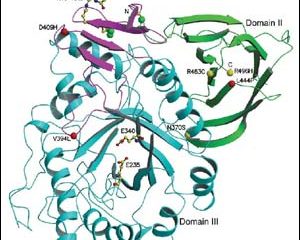News and developments from the field of interdisciplinary research.
Among other topics, you can find stimulating reports and articles related to microsystems, emotions research, futures research and stratospheric research.

National Insitute of Standards and Technology (NIST) scientists are taking their knowledge of mechanical tensile strength tests in metals and composites and applying it to medical research problems. Doctors long have known that babies born with congenital heart defects at higher altitudes have an increased risk of developing complications, such as pulmonary hypertension. Could there be some way to trick the arterial walls so that they wouldn’t stiffen under increased blood pressure?
Wo

In experiments conducted at the University of California, Berkeley, researchers have found a way to tap into the telltale electrical signals that mark cell death, opening the door to the creation of a “canary on a chip” that can be used to sound the alarm of a biochemical attack or test drug toxicity on human tissue.
In a study appearing in the June 15 issue of Sensors and Actuators, researchers used a microchip to electrically determine cell viability by detecting changes in the electrica

In recent years, the solution to the problem of diseased or damaged organs has been to replace the old with the new. By taking tissue from either a patient or a donor, surgeons have transplanted this to the damaged area and given many people a new lease of life.
The method is not without limitations, however. Issues such as the availability of donor organs and the need to use drugs to prevent the immune system rejecting the “foreign” tissue have prompted research into alternative ways to d

Oxford scientists are using the latest virtual reality technology to study how we perceive the world in 3D. The “immersive virtual reality” used by the Virtual Reality Research Group at Oxford University allows subjects to walk around or look up and down while what they see through a headset changes accordingly – they can explore the virtual environment by literally walking around. Meanwhile, the scientists monitor how they are perceiving the dimensions of their ‘Matrix’-style world.
The res

Discovery may help design effective therapies for the genetic disease that mainly affects Ashkenazi Jews
An interdisciplinary team of Weizmann Institute scientists has solved the three-dimensional structure of an enzyme called glucocerebrosidase. Mutations occurring in this enzyme cause Gaucher disease, a genetic illness that mainly affects Ashkenazi Jews. The Institute study, published recently in EMBO Reports, may lead to the design of effective new therapies for treating the disea

The future of proteomics is in good hands with one of the most powerful and versatile mass spectrometers being developed by scientists and engineers from the William R. Wiley Environmental Molecular Sciences Laboratory.
The high-throughput Fourier transform ion cyclotron resonance (FTICR) mass spectrometer and automated liquid chromatography (LC) system is a breakthrough in mass spectrometry capable of improving the understanding of protein production, function and interactions at the cellul